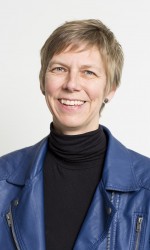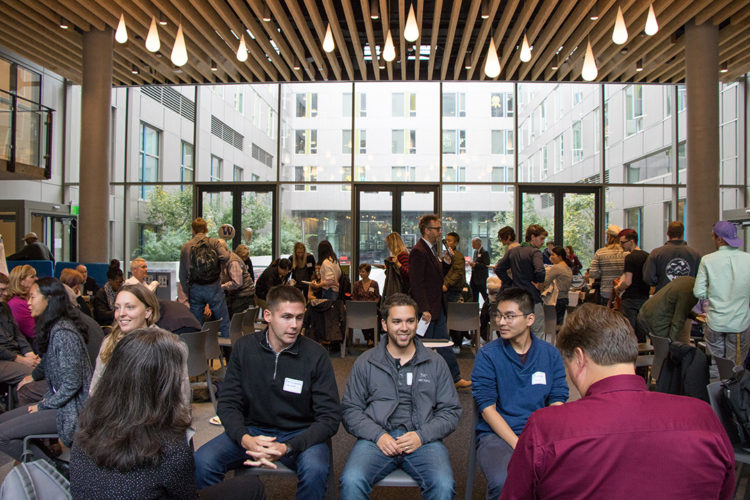“We acknowledge that we hold this world in trust and recognize the immediate threat climate change and its impacts pose to current and future generations,” reads a statement signed this fall by more than 100 construction-related companies and nonprofits.
“We must act urgently and collaboratively to transform the built environment from a leading driver of climate change to a significant and profitable solution.”
Such strong words of industry agreement are good news to Kate Simonen, architect, engineer and University of Washington associate professor of architecture. Simonen leads a UW-hosted research group called the Carbon Leadership Forum that brings together academics and building industry professionals to study carbon emissions across a building’s life cycle, or entire period of use, and to focus on reducing the amount of “embodied” carbon in building materials.
The statement comes from a declaration that was shared and signed at an event called Carbon Smart Building Day, linked with the three-day Global Climate Action Summit in September in San Francisco.
“Together, we can help draw down excess atmospheric carbon,” reads this Carbon Smart Building Declaration, “and create a built environment that supports a healthy, equitable, and sustainable human community.”
Carbon emissions from the built environment account for more than 40 percent of greenhouse gases worldwide, and must be dramatically reduced to combat the effects of climate change. Simonen says that construction of a single “low embodied carbon” office building could save 30 million kilograms, or 33,000 tons, in carbon emissions, Simonen says — “the emissions equivalent of avoiding driving a car around the Earth 3,000 times.”
Exciting, too, Simonen said, is a new, open-source tool to track the carbon emissions of raw building materials called the Embodied Carbon Calculator for Construction, or EC3 for short. The tool, developed by the Carbon Leadership Forum in collaboration with Skanska and Amsterdam-based C-Change Labs, can help construction professionals better report and reduce embodied carbon. No less an ally than Microsoft announced in September that it will pilot the calculator as the corporation remodels its campus. Funding for this has been provided by the Charles Pankow Foundation, the MKA Foundation and other building industry supporters such as carpet manufacturer Interface and the American Institute of Steel Construction.
The Carbon Leadership Forum is now an affiliate of EarthLab, a new institute at the UW seeking to connect academics with people working on these environmental challenges and translate science into practical solutions.
Simonen said she was encouraged by a standing-room-only audience for Carbon Smart Building Day, the new calculator tool and the fact that so many have signed the Carbon Smart Building Declaration.
“What this means,” she said, “is we are approaching global consensus on the challenge ahead and exciting momentum on where to act to increase impact.”
Simonen added that the Carbon Leadership Forum continues to work with industry and NGO partners to build awareness of embodied carbon in construction. Another ongoing initiative, she said, is the Embodied Carbon Network, a platform for engagement and information to help achieve the aim of a carbon-neutral built environment by the year 2050.
###
For more information, contact Simonen at 206-685-7282 or ksimonen@uw.edu.
Read more about embodied carbon and the Carbon Leadership Forum:
- New York Times: You’ve Heard of Outsourced Jobs, but Outsourced Pollution? It’s Real, and Tough to Tally Up, from September 2018
- UW News: Toward greener construction: UW professor leads group setting benchmarks for carbon across life of buildings, April 2017
- College of Built Environments: Moving Toward Zero: Q&A with Associate Professor Kate Simonen, March 2017
- UW News: A greener concrete? UW-led coalition seeks to reduce concrete’s carbon footprint, April, 2013




